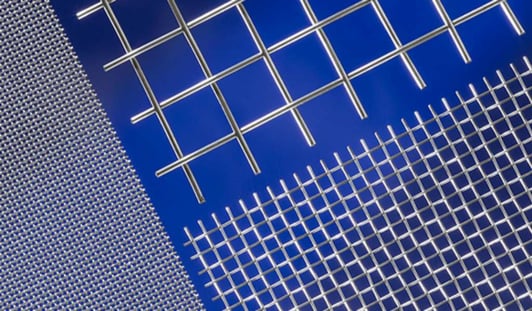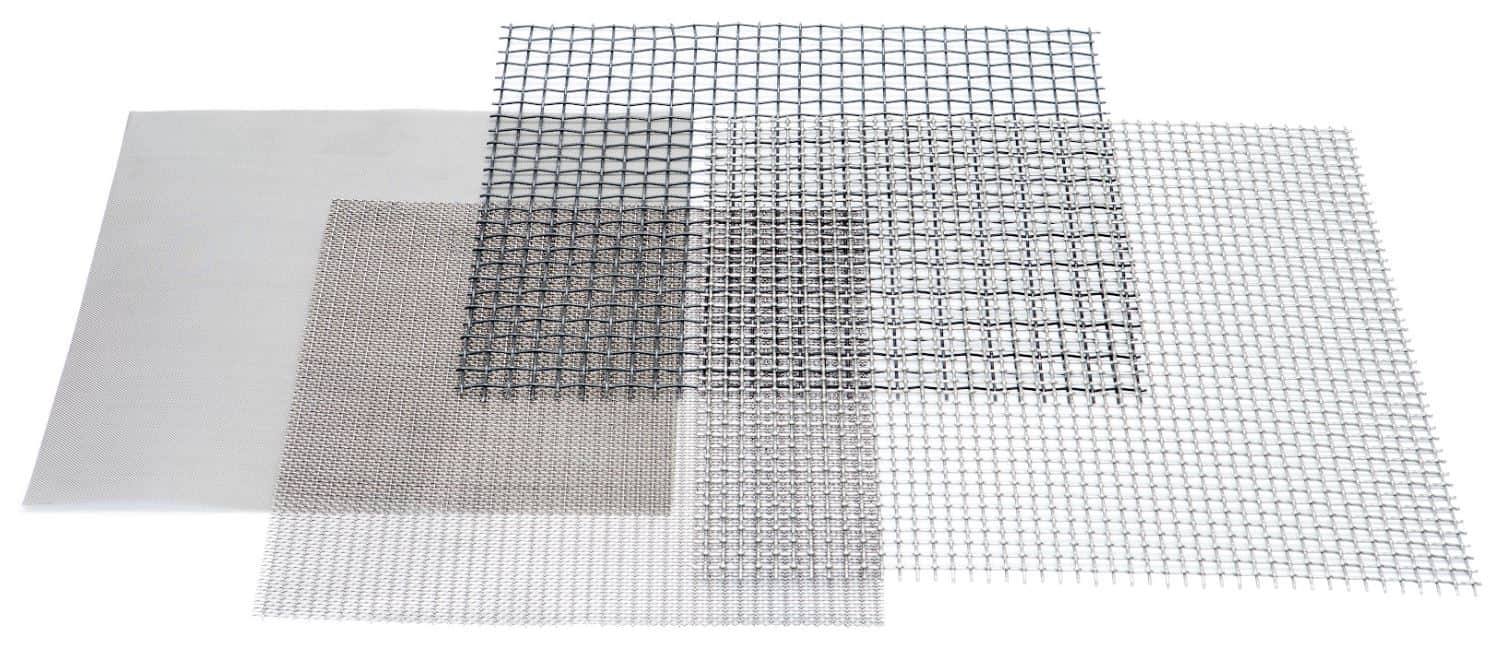Agricultural Insect Protection Screens: Why Use Woven Wire Mesh?
Agriculture has been around as long as civilization. It's essentially the central nervous system of everyday life, influencing things such as the food we eat to the molded pulp fiber packaging that keeps our electronics safe during shipment.
But like any other industry, the agricultural industry faces several hurdles that can hinder progress. One of the most troublesome hurdles is preventing insects from invading and ruining crops on a large scale.
While there are many ways to protect crops from insects, more and more farmers are turning to the properties of woven wire mesh. Having said that, how can you leverage woven wire mesh to preserve the integrity of your crops?
W.S. Tyler has helped customers weave wire mesh into their operations for over 150 years and is here to help leverage the versatile material to protect your agricultural investments from invasive insects.
With that, this article will help you better understand why you may want to consider woven wire mesh as an insect protection screen. You will learn:
- Why insect screens are important the agricultural industry
- How woven wire mesh is defined
- The benefits woven wire mesh delivers when used as an insect protection screen
- How woven wire mesh pricing is handled
The Importance of Insect Protection in the Agricultural Industry
Certain insects, such as bees, help pollinate crops and allow farmers to keep up with demand. At the same time, there are just as many bugs that can infest these crops.
These insects can consume your crops, lay eggs throughout the crops, and cause widespread disease among your crops. Not only do farmers lose out on the potential revenue of these crops, but they also have to cover the expenses associated with disposing of them.
Now, in order to protect their crops and maximize revenue, farmers often implement measures to prevent insect infestations. This commonly comes in the form of chemicals, such as insecticides, or GMOs.
But these solutions have a long list of controversial stigmas among the many regulatory organizations around the globe.
To maintain organic growth, farmers build enclosure structures that protect their crops from harmful insects without hindering the elements from aiding the growth cycle. While solutions such as knitted mesh are available, woven wire mesh is becoming more widely used throughout the agricultural industry.
What Is Woven Wire Mesh?
Woven wire mesh is a screening material comprised of several metallic wires that are interwoven together. A traditional, heavily monitored weaving process is implemented to weave the wires into specific weave patterns that feature precise, rigid pore openings.

Known for its customization, the parameters of woven wire mesh can be altered to best accommodate your needs. This includes the alloy, weave pattern, mesh count, openings size, and wire diameter.
Several value-added services can also be applied to fine-tune the performance of woven wire mesh. Depending on what you are trying to achieve, you can have your mesh heat-treated, slit, formed, calendered, welded, and stamped after being woven.
Why Use Woven Wire Mesh Insect Screens?
All the reasons that place woven wire mesh over the other stem down to one thing: the customization of the product. This, in turn, translates to adequate airflow, durability, and sunray absorption.
Airflow
Airflow is essential to ensuring your crops grow efficiently and stay healthy. Maintaining a consistent airflow helps your crops release excess water.
As the opening size and wire diameter of woven wire mesh insect screens can be customized based on the crops they protect, you can ensure optimal airflow. This, of course, can be done while maintaining a pore size that blocks pests.
Durability
Theoretically, a knitted mesh solution could deliver the same pore openings size that keeps pests at bay as woven wire mesh. That said, woven wire mesh is typically made from a 300 series stainless steel, delivering superior durability.
This means your crops, watering systems, and other equipment are protected from animals and insects chewing through the mesh, flying debris, and weathering elements like hail.
Sunray Absorption
It goes without saying that sunlight is one of the most important elements of the agricultural industry. It's what allows plants to leverage carbon dioxide and water to create the carbohydrates and oxygen needed to flourish.
Now, when it comes it insect protection screens, farmers can use a number of materials, such as an expanded wire. The problem that arises from these materials is that they often have a large amount surface area that prevents crops from absorbing an adequate amount of sunlight.
Woven wire mesh can combat these issues when you fine-tune the wire diameter and pore opening size of your mesh. This works to minimize the amount of material blocking sunlight, allowing your crops to absorb the required energy while still keeping pests at bay.
How Much Does Woven Wire Mesh Cost?
Woven wire mesh is known for being both rigid and pliable. This goes to say that woven wire insect protection screen mesh is often purchased in bulk rolls or cut-to-size pieces.
This allows you to form, cut, and otherwise alter the mesh at your own leisure. That said, when purchasing woven wire mesh in rolls or cut-to-size pieces, the following factors will influence the cost of the order:
- Mesh specifications
- Dimensions
- Required value-added services
- Required compliance (i.e., DFARS)
- Order Quantity
But maybe you wish to have a comprehensive system that uses additional materials, such as framed wire mesh pieces or irregularly shaped pieces and don't have the capacity to handle fabrication yourself. This would then classify the mesh as customized wire mesh components.
If this sounds more like how you envision integrating woven wire mesh, you should expect the following to play a role in the price:
- Mesh specifications
- Dimensions of the part(s)
- Layer configuration
- Required value-added services
- Required compliances (i.e., DFARS)
- Proprietary fabrication process
- Labor
- Quantity
Get To Know the Basics of Woven Wire Mesh
Insect protection screens are integral tools in the agricultural industry as they work to protect crops from invasive insects. While there are several screen solutions on the market, woven wire mesh is growing in popularity as it provides the customization needed to deliver optimal durability, airflow, and solar absorption.
Now that you have an idea of how woven wire mesh can benefit your fight against invasive insects, the next steps involve you exploring the woven wire mesh market. But to ensure you can begin making the right decision, you must first get to know the jargon and terminology that you will encounter.
W.S. Tyler has helped customers identify whether or not they can benefit from the versatile performance of woven wire mesh for 150 years. We strive to do everything we can to learn your operation, inside and out, and pass on the knowledge needed to design wire mesh solutions that will improve the products you offer.
Read the following article to learn the terminology associated with woven wire mesh and better prepare yourself for future conversations:
About Ronnie Brown
Ronnie is the Content Writer for W.S. Tyler and has four years of experience as a professional writer. He strives to expand his knowledge on all things particle analysis and woven wire mesh to leverage his exceptional writing and graphic design skills, creating a one-of-a-kind experience for customers.




